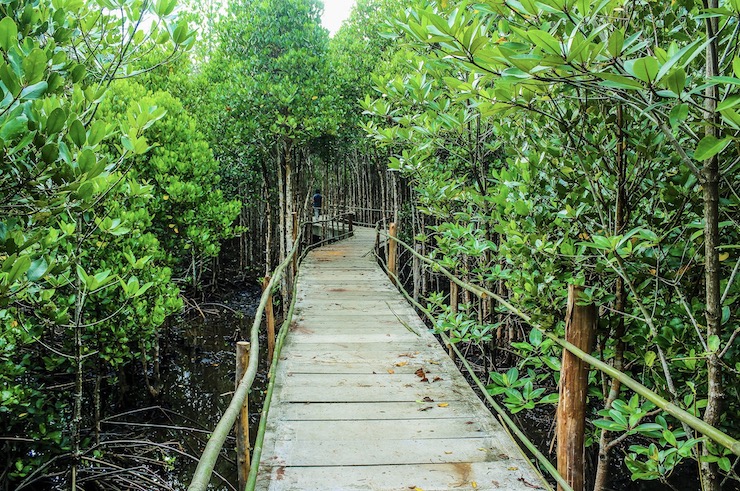Planting Seeds: Abu Dhabi Turns To Drones for Mangrove Conservation

Farm management in the 21st century increasingly relies on “precision agriculture” – the targeting of farm inputs to specific portions of a farm to generate the highest yield while reducing waste and lowering costs. As part of this new approach, farmers in a growing number of countries are replacing their fixed wing aircraft and field labor crews with UAVs. Aerial drones equipped with high-powered zoom cameras and sensors can map farmland and collect data on soil fertility and plant stress and disease conditions remotely, in a fraction of the time it takes field crews to perform the same work. Farm labor is increasingly hard and expensive to recruit, and crop dusters require pilots and fuel. Autonomous drones are not only fast and cheap by comparison, they enhance farm management’s sustainability.
While aerial mapping and spraying continue to dominate most agricultural drone operations, some farmers are beginning to experiment with UAVs as a cost-efficient means of seeding and planting, too. In many of these cases, the “crops” being planted aren’t for cultivation and consumption – but for conservation. Such is the case in Canada, for example, where the government is deploying drones to reforest the nation’s wildfire-scarred landscape by dropping tiny pods of seeds at a rate of five per second. Studies show that seed-dropping drones can plant 40,000 trees a day, about four-fifths the cost of conventional means. Flash Forest, an Ontario start-up, is spearheading the drone work, which covers 13 sites, reputedly the largest reforestation campaign in Canada’s history.
An even more ambitious effort is about to get underway in Abu Dhabi, where coastal mangroves have long figured prominently in the nation’s conservation strategy. Mangroves are small tree shrubs that grow in saline or brackish water and act as a natural windbreak, protecting the coastline – and nearby homes and buildings – from tidal surges; they also provide a thriving habitat for a wide range of fish and bird species, enhancing biodiversity; in addition, mangroves have been shown to assist with carbon sequestration, which means, planted in sufficient numbers, they can help reduce climate change.
The government’s Environment Agency Abu Dhabi (EAD) division first began its Mangrove Initiative in 2020 with a pilot phase that achieved a 48% success rate. Last February, EAD scaled up the project, with 1 million mangroves planted via drones at different locations around Al Mirfa in Al Dhafra Region. Assuming this launch phase is successful, EAD intends to plant 100 million mangroves by the year 2030. It’s the largest conservation experiment of its kind anywhere in the world.
“The success rate for this year’s planting looks great so far and based on the data, we will do a refilling of areas for future success of the project,” EAD secretary-general Dr Shaikha Salem Al Dhaheri told Gulf News earlier this year.
EAD isn’t going it alone. Its new Mangrove Initiative is being implemented with a series of local, regional and international partners, including the British Zoological Society and France’s Sorbonne University, The country also has ambitious plans to establish the emirate as a global hub for mangrove conservation research and innovation. The project’s next planting phase will include an AI component for continuous machine learning. ENGIE, a global energy company, and Distant Imagery, a drone engineering solutions company, are assisting EAD with the technical aspects of the project.
|